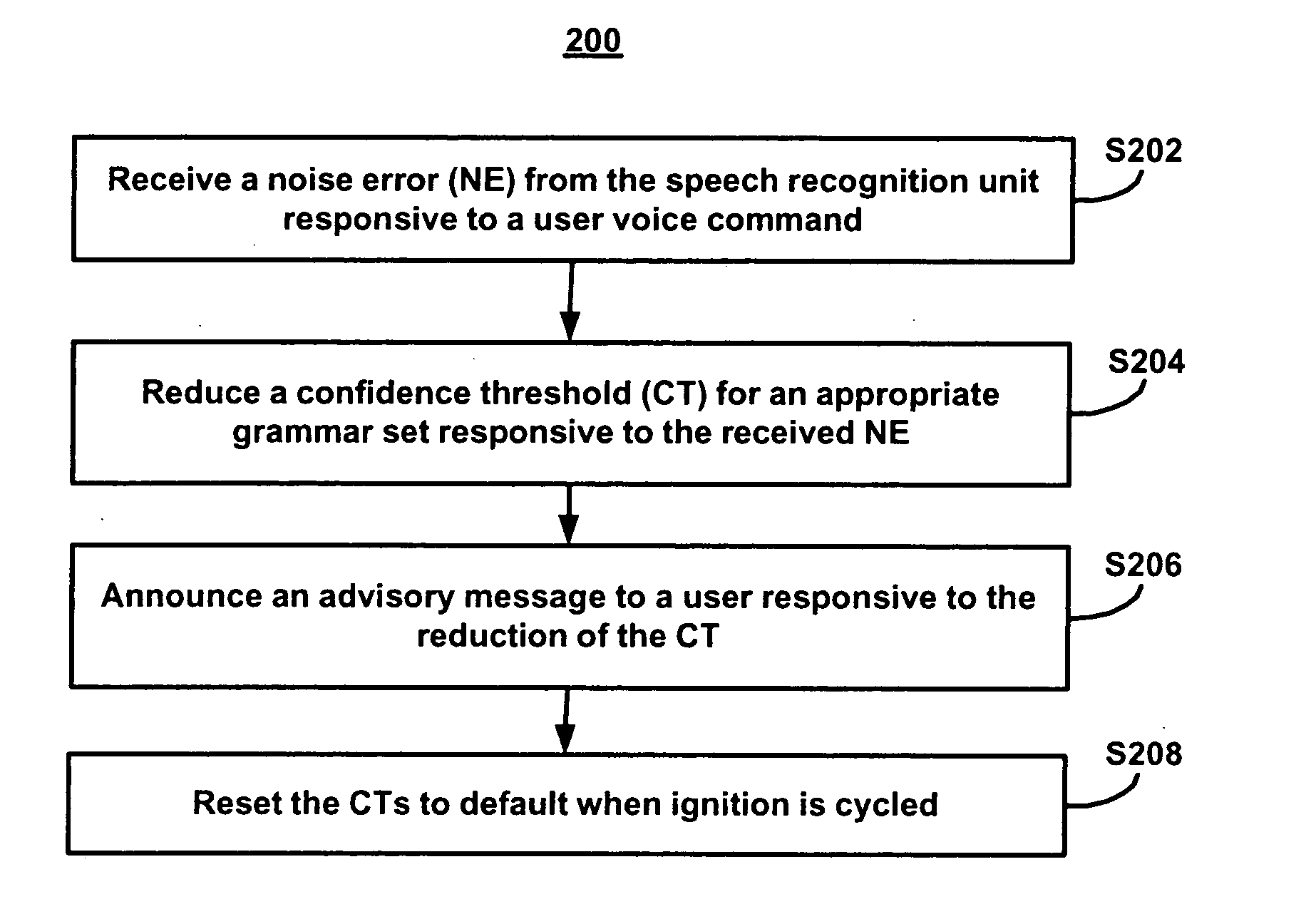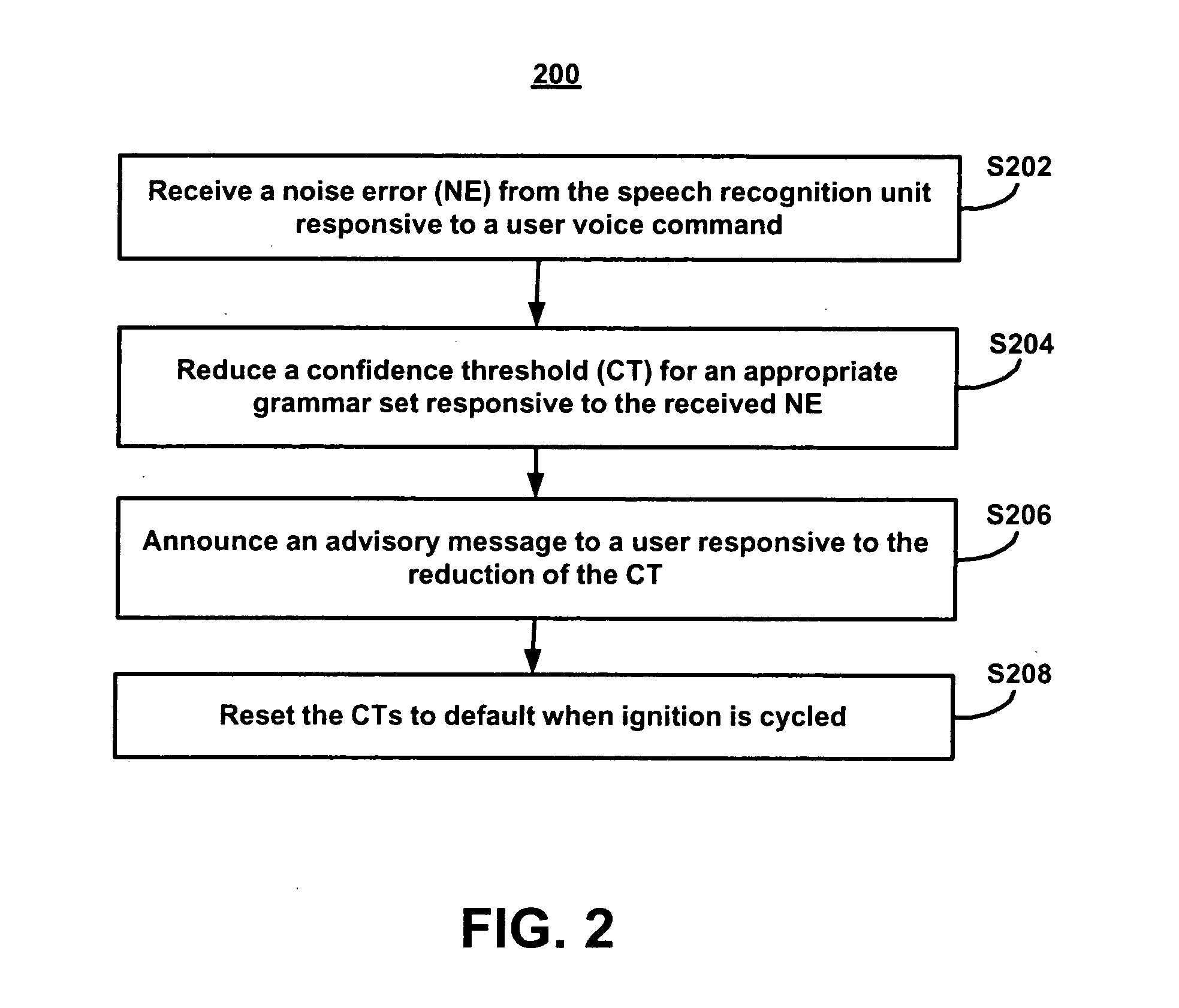Adaptive confidence thresholds in telematics system speech recognition
a technology of telematics system and confidence threshold, applied in speech recognition, speech analysis, instruments, etc., can solve the problems of not meeting the needs of everyone in different noise conditions, speech recognition session ends with unrecognized-command errors, etc., and achieve the effect of reducing the confidence threshold
- Summary
- Abstract
- Description
- Claims
- Application Information
AI Technical Summary
Benefits of technology
Problems solved by technology
Method used
Image
Examples
first embodiment
[0040]FIG. 2 illustrates a flowchart 200 representative of a method of configuring a speech recognition unit 136 in a MVCU 110 in accordance with the present invention. During stage S202, the telematics unit 120 receives a noise error (NE) from the speech recognition unit 136 responsive to an unrecognized user voice command. The user voice command received by microphone 130 is translated into digital signals by processor 122. The processor 122 transmits the digital signal to the speech recognition unit 136. The speech recognition unit 136 attempts to match the translated digital signals with digital signals for words stored in the speech recognition unit 136.
[0041] The digital signals for words stored in the speech recognition unit 136 are acoustic models. Grammar sets are associated with commands. Acoustic models include digital signals for words that are likely to be uttered during a speech task related to the command. In one embodiment, for example, a dial-command grammar set inc...
second embodiment
[0055]FIG. 4 illustrates a flowchart 400 representative of a method of configuring a speech recognition unit 136 in an MVCU 110 in accordance with the present invention. Flowchart 400 describes an embodiment in which the confidence threshold is reduced after announcing more than one noise reduction advisory messages to the user during a speech recognition session. In this embodiment, the confidence threshold is reduced by the preset amount two times responsive to at least two respective received noise errors. The user is prompted to repeat the voice-command after each reduction in confidence threshold.
[0056] During stage S402, the telematics unit 120 receives a first noise error (NE) from the speech recognition unit (SRU) 136 responsive to a user voice command not being recognized. During stage S404, the telematics unit 120 announces a noise reduction advisory message to a user responsive to the received noise error (NE) to prompt the user to repeat the voice command. The noise redu...
PUM
 Login to View More
Login to View More Abstract
Description
Claims
Application Information
 Login to View More
Login to View More - R&D
- Intellectual Property
- Life Sciences
- Materials
- Tech Scout
- Unparalleled Data Quality
- Higher Quality Content
- 60% Fewer Hallucinations
Browse by: Latest US Patents, China's latest patents, Technical Efficacy Thesaurus, Application Domain, Technology Topic, Popular Technical Reports.
© 2025 PatSnap. All rights reserved.Legal|Privacy policy|Modern Slavery Act Transparency Statement|Sitemap|About US| Contact US: help@patsnap.com



